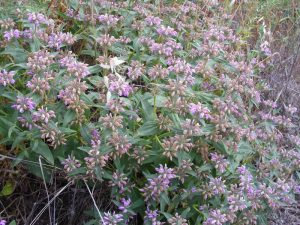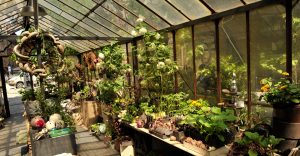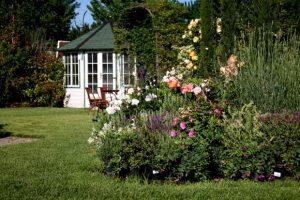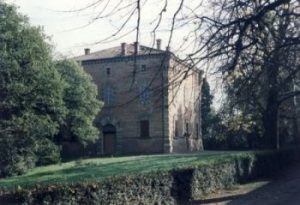This post is also available in: Italian
The second itinerary among the nurseries of Emilia Romagna explores the territory of Bologna, a beautiful and cultured city famous for its historic centre (with buildings dating back to the Middle Ages) and for its beautiful hills, just a few kilometres away (with the municipalities of Bazzano, Marzabotto, Pianoro, Monterenzio, Savigno e Castello di Serravalle). The nurseries you will find are specialised in ancient roses and fruits, wisteria collections, peonies, magnolias, ferns, local forestall plants and cactuses. There is also a special florist, where you will find very nice objects. Virtually, the itinerary starts just where the previous one ends, from the nursery L’Ippocastano; you can then go on to the next one, Wandering nurseries: towards the Delta of the Po.
Nurseries
The map indicates the nurseries and the other locations of the suggested itinerary. For each nursery, we indicate its distance from the others, in order to facilitate you in the choice of the ones to visit and their order.

Plantula, ad Anzola dell’Emilia (BO): from 2002, Alessandra and Domenico research and experiment new species, fit for our territory, cultivating them with natural methods. You will find medicinal, aromatic and edible plants, plants used for dyeing, perennial herbs, groundcover plants (both shade- and sun-loving), aquatic, marsh, local, rustic and non-native plants. Alessandra and Domenico also design and realise gardens and balconies. Distance from other nurseries: km 16 from Flò – km 23 from Mondocactus – km 36 from Flora 2000 – km 43 from Garden Studio – km 36 from Vivaio Vita Verde.

Flò, a Bologna: it is a very “British” spot, where interior decorator and floral designer Annalisa Lo Porto creates compositions and bouquets with seasonal flowers, combining them with more or less refined materials. She also sells vintage greenhouses and stoneware artisanal vases.

Mondocactus, it produces rare succulents and in peril of extinction, but also common plants. Distance from other nurseries: km 13,5 from Flora 2000 – km 23 from Plantula – km 9,5 from Flò – km 20 from GardenStudio – km 41,5 from Vivaio Vita Verde – km 38 from Vivaio Vivaverde.

Flora 2000 , a Budrio (BO): the renowned nursery was established many years ago by its dynamic and funny owner Carlo Pagani, among the first ones to reintroduce the cultivation of ancient roses and fruits. Over time, he added many collections: peonies, geraniums, magnolias, lilies, perennial herbs, shrubs, vines. There is a small garden centre annexed to the nursery, with a tiny but well supplied botanical library. According to the season, there are gardening and pruning classes. If you can, try to make an appointment with Carlo to visit his Enchanted Wood, about which he writes every month in the magazine Gardenia. Distance from other nurseries: km 9 from GardenStudio – km 36 from Plantula – km 22 from Flò – km 13,5 from Mondocactus – km 40 from Vivaio Vita Verde.

GardenStudio, just outside Bologna, in via Dugliolo: opened 30 years ago by Michele Pasqualini Galliani and Elisabetta Cavrini, it offers a very interesting collection of ferns (arboreal, rustic and tropical), rustic orchids (among which Cypripedium, Bletilla and Pleione), Hemerocallis, Hosta, Eucomis and roses (ancient, modern and David Austen). The owners also design and realise gardens and balconies. Distance from other nurseries: km 32 from Vivaio Vita Verde – km 43 from Plantula – km 31,5 from Flò – km 20 from Mondocactus – km 9 from Flora 2000.

Vivaio Vita Verde, a Galliera (BO) : established in 1997 by Valerio Gallerati to produce young forest plants in pots, it now produces rare wood plants, local, Mediterranean and seed plants, wild fruits, ancient varieties and plants for reforestation, grown in technical pots, like vases and anti-coil cavities, to ensure a high-quality material. Their production is varied, with less known plants, local plants, and minor species found and reproduced. Distance from other nurseries: km 36 da Plantula – km 41 da Flo’ – km 41,5 da Mondocactus – km 40 da Flora 2000 – km 32 da GardenStudio.
Gardens not to be missed

Giardini del Casoncello, a Loiano (BO): created by Gabriella Buccioli, the owner, on the long-abandoned family estate, it is a very special place, where about 400 different species grow (common, rare, local and exotic ornamentals). The gardens have been open to the public since 1996 and cover 1 hectare, divided into different areas: the mixed lawn, the vegetable garden, the wood-garden, the herbs garden, the orchard garden, the mixed hedges, perennial herbs bordures, the white garden, the yellow garden, the blue plums valley, the Cornelian cherry valley, the cherry valley, the fireflies valley, the cool garden, the elder valley, a body of water, a rock garden, the farmyard garden with big mock oranges, the Mediterranean garden with cistuses, Phlomises and other unusual species on the Apennines. The plants are arranged in an informal way and are left free to grow, hosting many small animals.

Parco di Villa Pasolini dall’Onda, a Imola (Bo): surrounded by secular oaks, it extends over 180 hectares, of which 22 are destined to a vineyard, with a small precious Italian garden made up of squared box hedges (Buxus sempervirens) dating back to the end of the 18th Century and of a small labyrinth, a collection of ancient, modern and Bengala roses from the 19th Century, and a collection of lavender, in-between the villa and countryside. Nowadays, the garden belongs to the network of Grandi Giardini Italiani.
Medieval villages to visit
We recommend to visit some of the Medieval villages that characterise the province of Bologna: Dozza, in particular, with its Rocca, a monumental complex that Caterina Sforza during the Renaissance transformed into a fortified castle and noble residence; Borgo di San Pietro, on the Ozzano hills, on the border with the Regional Park of Gessi Bolognesi and of the Abbadessa badlands, with the recently restored tower, the Medieval church and the two 15th Century fountains; Malacappa, hamlet of Argelato, where time seems to have stopped; Selva Malvezzi, hamlet of Molinelli, a 15th Century village renovated in the 17th Century, when the Master Palace and the Governor Palace were built.
This post is also available in: Italian


Leave a Reply